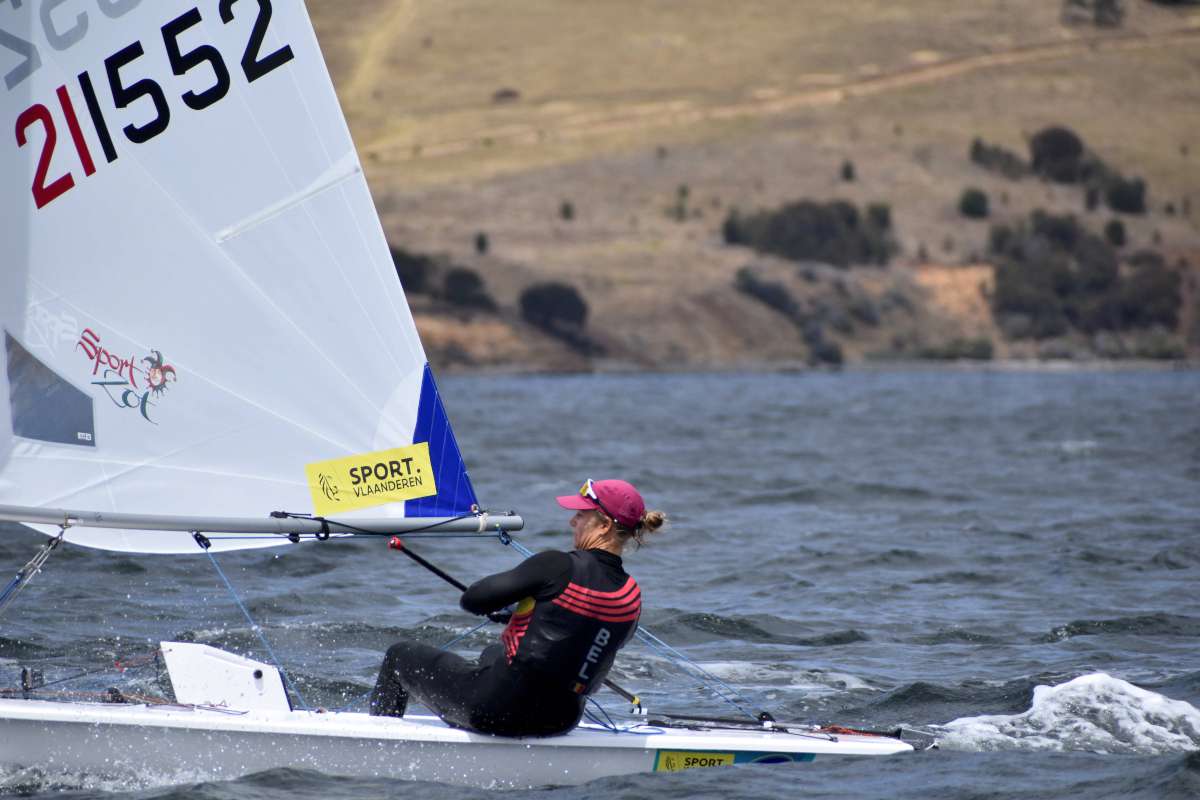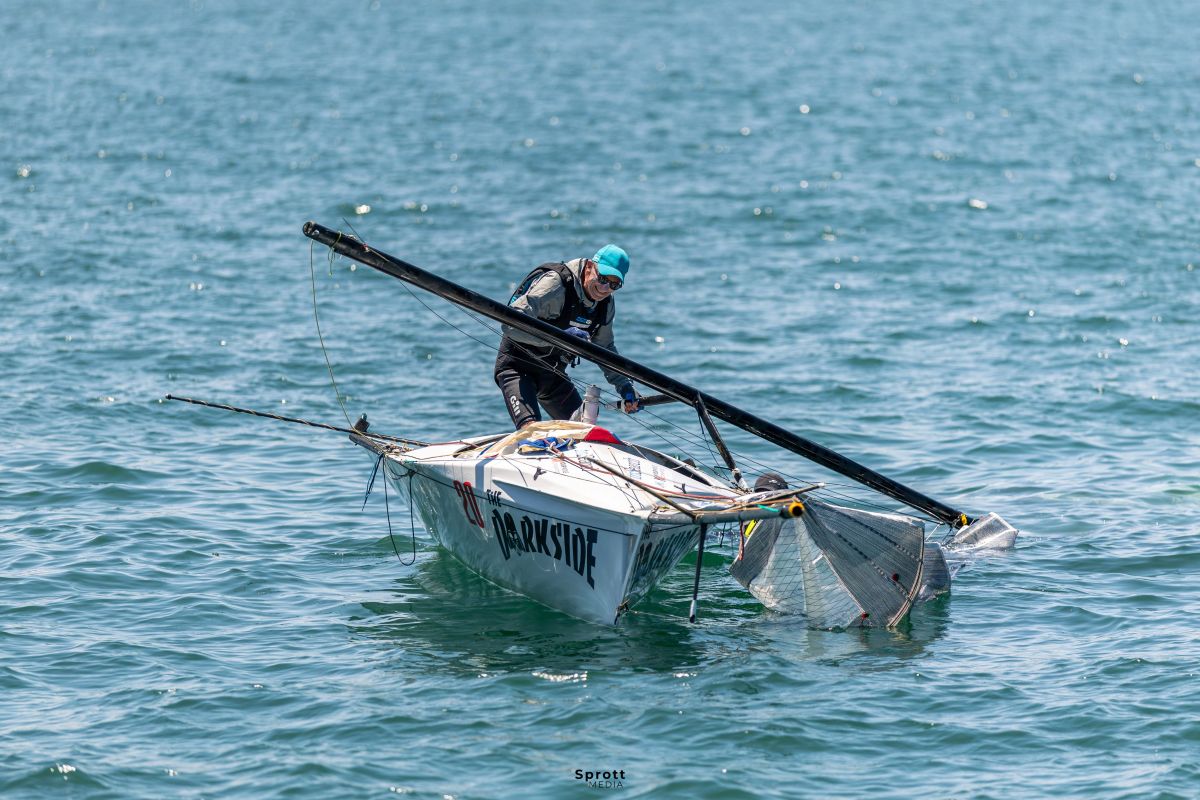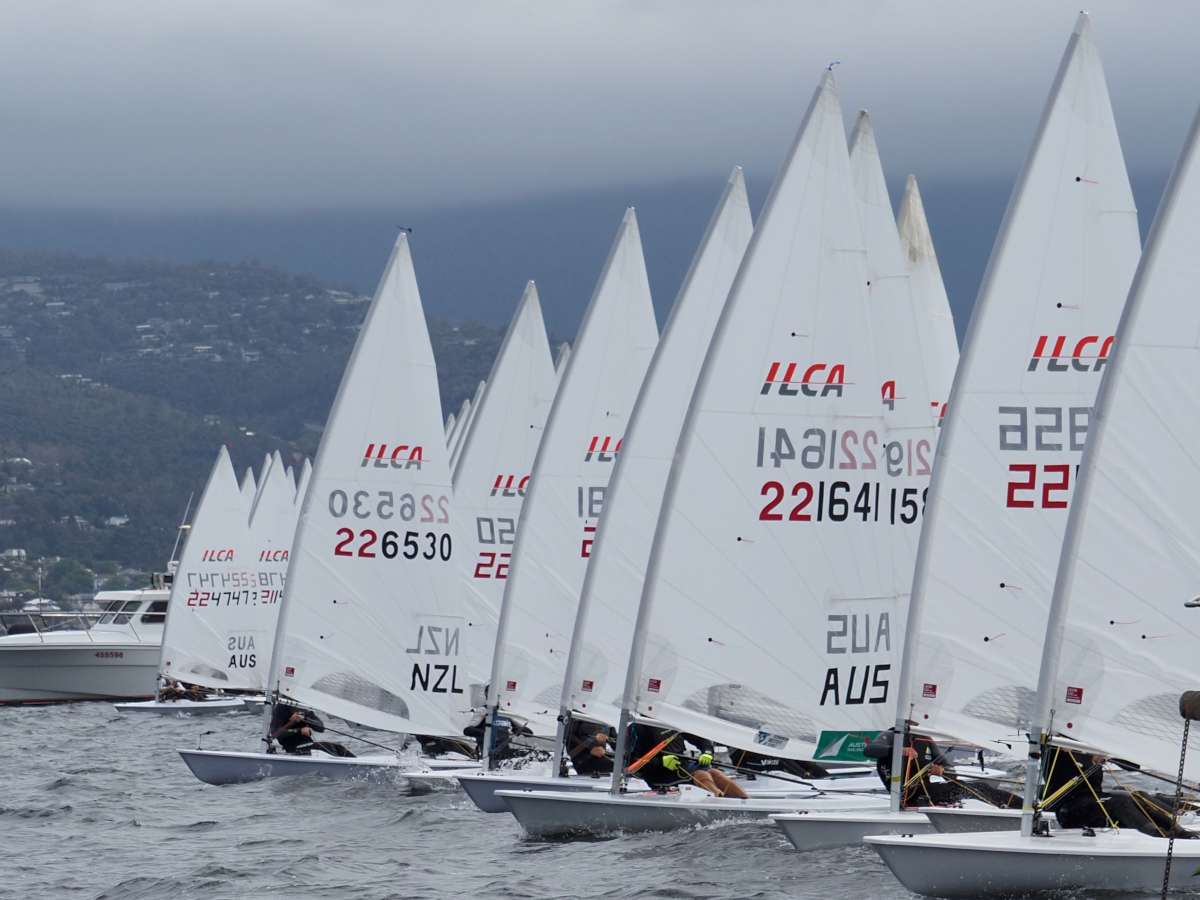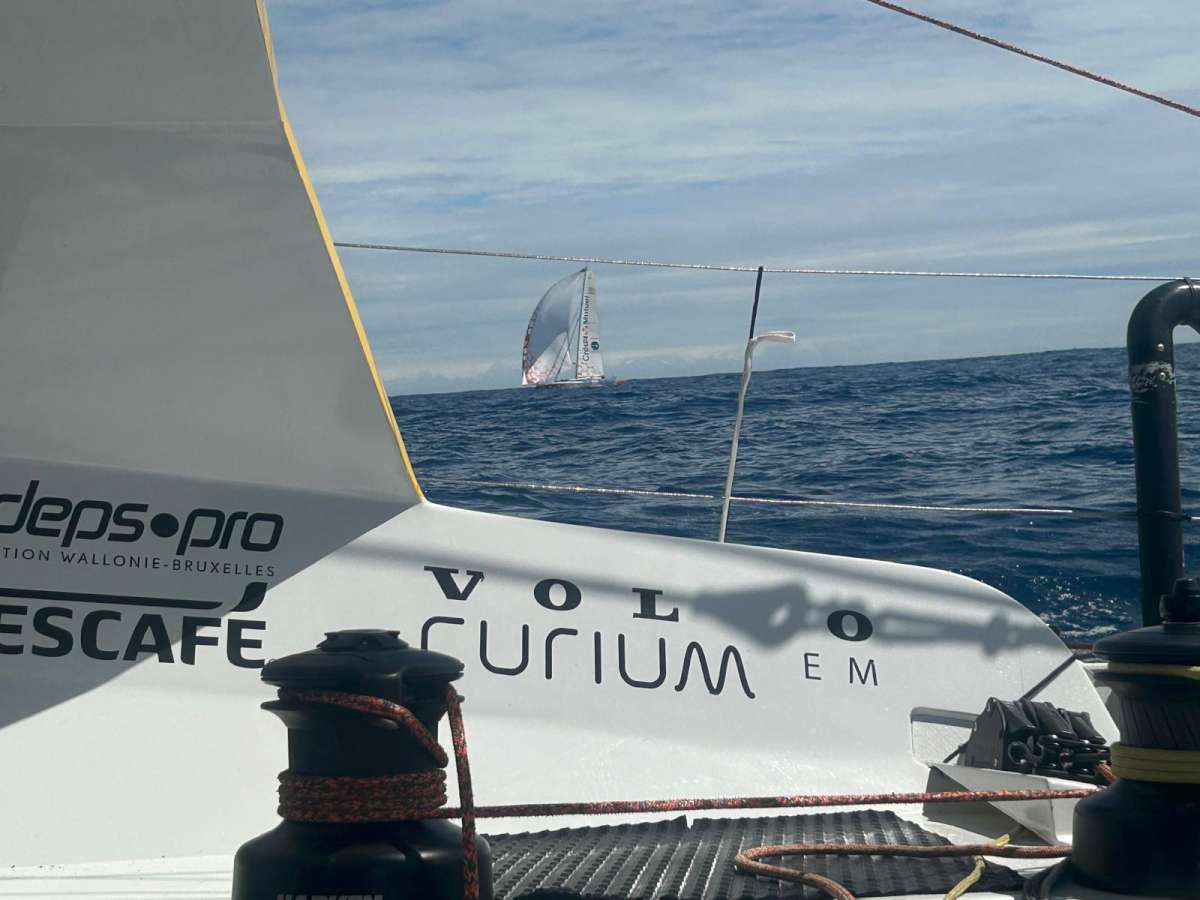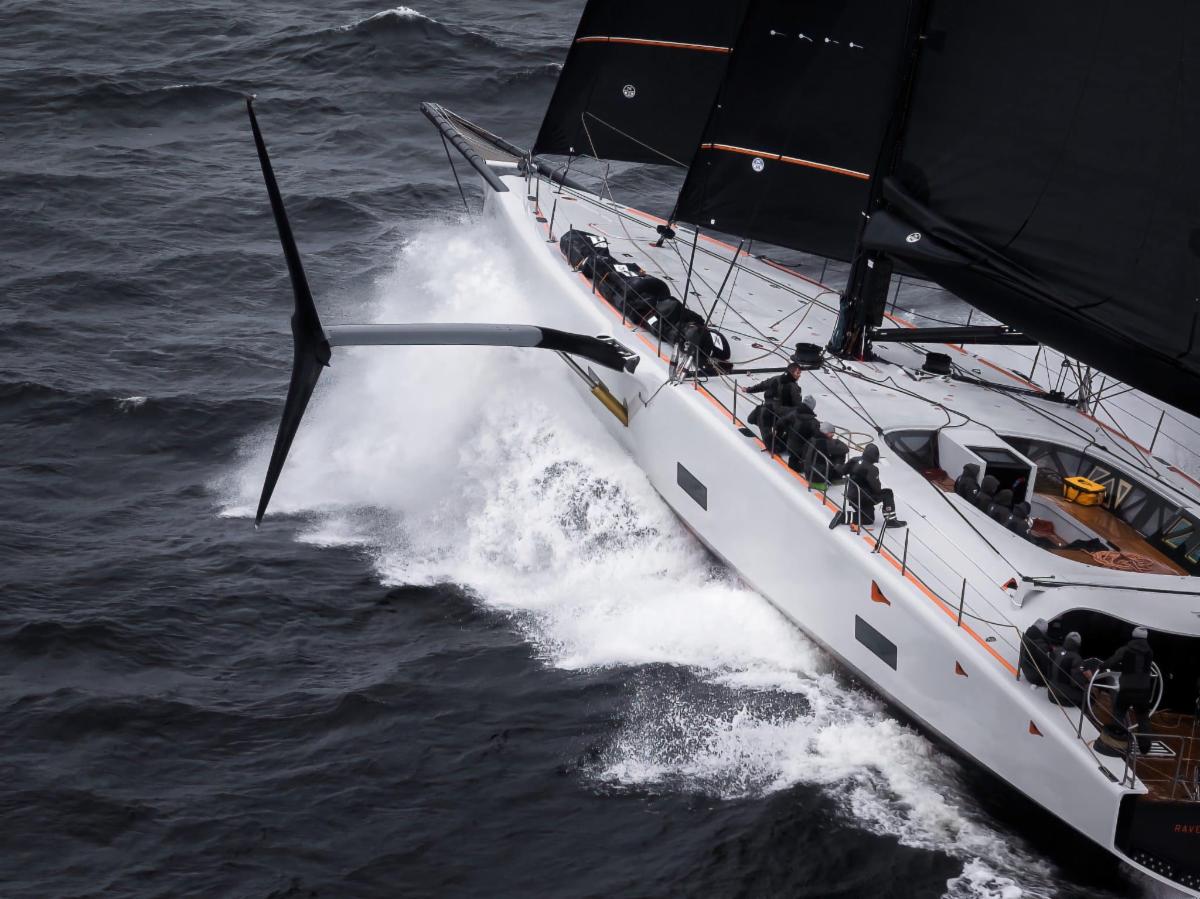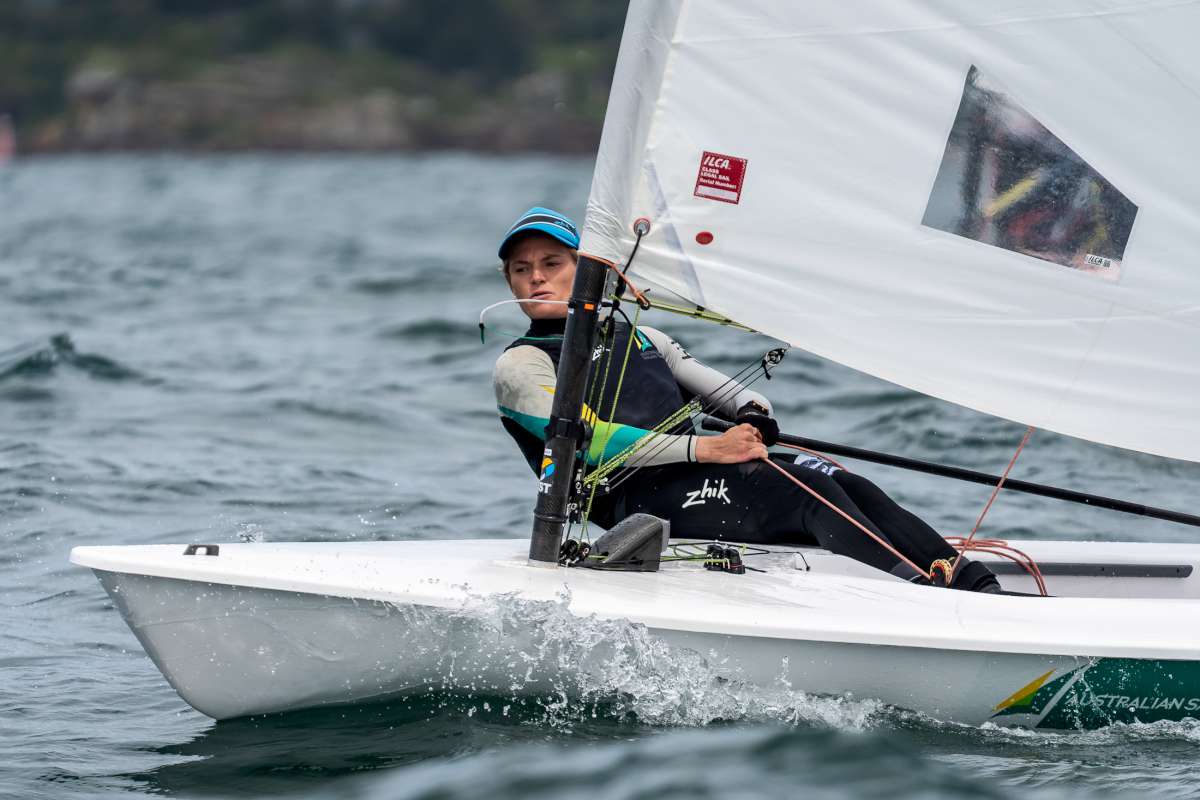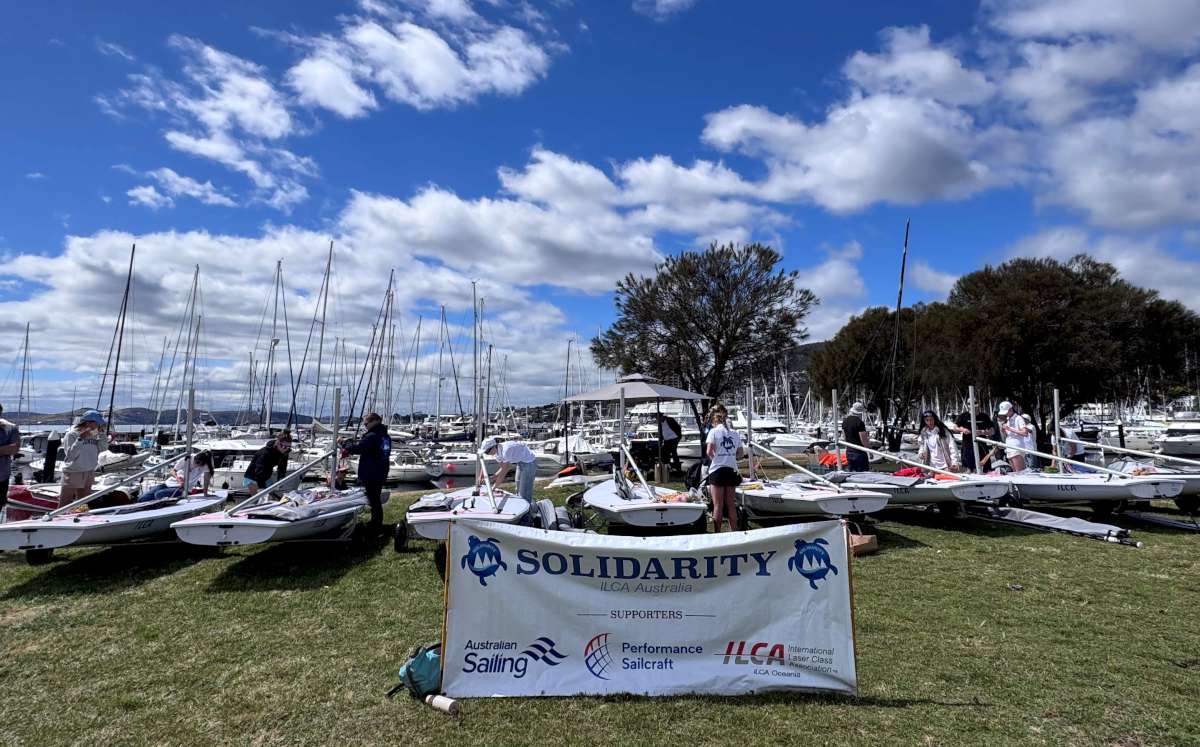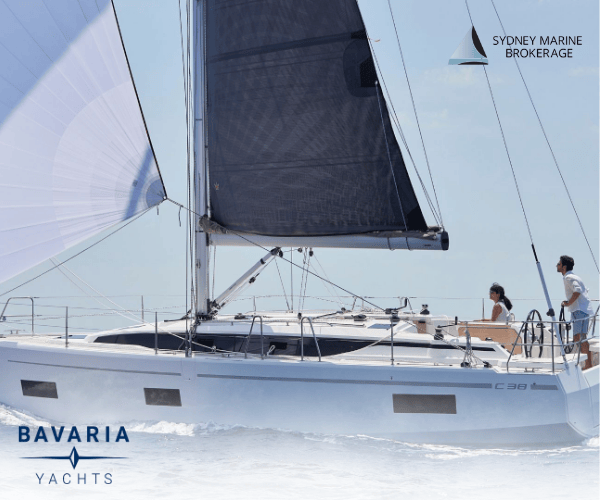We recently returned to Australia on our Australian catamaran from being offshore for two and a half years. We have just experienced the mine field of the re-importation process that Rosemary Jilderts described in her article 'Exporting and importing: what are the rules?' that appeared in the October issue of Cruising Helmsman, 2016.
As with most yachts' persons we have spoken to, we were not aware of this process when we left from Southport back in June 2018. Our catamaran was imported into Australia from New Zealand and Australian registered in 2010 by the previous owner with duties paid in full.
My husband and I bought her in 2014 and spent the next four years getting her offshore ready while saving enough money to leave. The year 2020 proved a challenge for many, our own story being separated from our home, our yacht, by country border closures, a mad dash to get back to her in Indonesia when we were allowed and then a repatriation mission to return to Australia in the middle of cyclone season.
During arrival formalities at our port of entry in Australia, we were told by Australian Border Force (ABF) that we had to re-import her.
As we had not 'exported', we started to politely ask questions. We were recommended to hire a broker as the ABF officers were “not licensed to enter the legal data on our behalf” and they openly admitted that they did not know how to fill in the forms anyway. I thought, “how hard can this be?” Later that turned into “how wrong could I be?”
On the ABF website (www.abf.gov.au) the classification for exporting is quoted as: “Requirements for departure – Masters of Australian or imported vessels may be required to ‘enter’ the vessel for export if the craft is to be sold or positioned overseas.” We intended to do neither.
I have written this article to assist others on navigating this process if they are unlucky enough to be presented with this seemingly complex and irrelevant issue and stupid enough to do it themselves. I hope that the below will help others fill in the forms but I must give a warning: I still don’t know if what I did is 100% correct. I could have easily misinterpreted the code meanings and was just lucky the computer program accepted the inputted data and did not autogenerate any mysterious charges.
One thing I will stress is that we had 'not altered, improved or modified our vessel in any way as to increase its value whilst overseas'; which is basically what they are after. Because if you have done so, you will need to pay duty on the difference in value. This is a far more complicated process so this article does not cover those circumstances. If that is your circumstances, I suggest you hire a broker!.
You are welcome to follow the reasoning method I used but please bear in mind that there were huge discrepancies across the departments, so what worked for us might not work for you and I take no responsibility for your outcome if you do choose to go it alone without a broker.
I searched the web to prove to myself that there was absolutely no mention of returning Australian yachts needing re-importation. I read Rosemary’s article, which although extremely helpful in allowing me to let go of the bone, didn’t solve our problem because quite frankly there is no solution other than to just do what you’re told.
What made it harder to drop my signature stubbornness was the fact that we had spoken to so many other yachties who had never heard of it nor had to do this on any of their repeated re-entries, one of which had checked in as little as a week before us into the same port! Please note: individual ports and departmental staff have not been identified to avoid any repercussions.
I managed to find the document: 'Documentary Import Declaration Comprehensive Guide' (https://www.abf.gov.au/help-and-support-subsite/Guides/doc-import-declaration-guide.pdf) and I was sent a booklet from a helpful ABF officer: 'Private Small craft & Yacht Importation Guide' but note the contacts will differ depending on which port you check into.
Again I could not find how this was relevant to Aussie yachts and I don’t consider myself a stupid person, so I thought I would seek out as much info as I could from calling different brokers. I had all the time in the world being stuck in hotel quarantine.
But this just added to my frustration.
Having been quoted by our ABF officer about $50-$100 for a broker, I was laughed at, hung up on or told indignantly that their fees were higher. Quotes ranged between $400 to $1000.
But that was the minority of the calls I made, the rest were as equally confused as me over why one would have to re-import an Aussie vessel. As we had been haemorrhaging money up until this point due to visas, travel, hotel quarantine, biosecurity, and the unanticipated, extortionate marina berth that we were forced into, I was indignant that this should not cost us any more.
In hindsight, had I gone with a Customs Broker, I truly wish I had for all the angst and stress this caused, I would have chosen TACS: www.tacsinternational.com.au. The office does not have to be at your port of entry, but I imagine it helps. They quoted reasonably and reassuringly; knew what they were talking about. I was slightly disheartened though as this meant it was indeed 'a real thing'.
Reading all the guides, looking up funny words on Google and going over and over the forms, I was still stumped as to what codes I was meant to use. I was terrified to get it wrong in case it turned into a very expensive mistake and we had to pay duty again!
I then came across a kind lady on social media who said “don’t stress, we did it ourselves a year ago. It's just one form, I will send you ours and you can copy the codes.” Let me add here, I had to find the relevant forms myself, I was not given them by ABF.
The first was B650 or N10 (https://www.abf.gov.au/form-listing/forms/b650.pdf) I dutifully filled it out and sent it to ABF as per the kind lady’s assistance. It was sent back almost immediately with highlighted sections, code queries and request for proof of our choices.
The accompanying email contained suggestions, which was the first help we had received on what to potentially write on the form. Why we needed to fill out more than what was accepted by a previous importer was another mystery I would never solve but I continued on the mission.
I took more advice to call one particular ABF office and see if they could help with these unbelievably cryptic codes and I struck it lucky. The officer I spoke to said that their lodgement officer could input the data for us and help with any errors.
Normally, it has to be lodged at the port of entry but I guess the guy felt sorry for me because by now I was more than a little stressed. He had actually taken the time to do his own research and agreed that it was not visible anywhere on the ABF website that this needed to be done at all. None of the info available mentioned returning Australian yachts.
He was now thoroughly committed to unravelling the mystery as to how this strange rule came about. So one day maybe we will get that answer.
But in the meantime we still had to do it. So, following all the guides, templates and advice from all directions I filled it out, sent it off and waited.
There is also this helpline but we never tried it: The Customs Information and Support Centre (CI&SC) on 1300 363 263.
Let’s explore some of these delightful boxes and codes, which are all semi-explained in the declaration guide. The ones not covered here are either self explanatory or should be left blank.
B650/ N10 Import Declaration:
Essential we are considered as 'Australian returned goods' which must be re-imported for 'home consumption'.
SECTION A OWNER REFERENCE:
Whatever you want to call the file to identify it: e.g your boat name and date.
CCID = CLIENT IDENTIFIER NUMBER:
This is a unique code obtainable through the Integrated Cargo System. You will have one if you have exported/imported previously. If not, use form B319 (https://www.abf.gov.au/form-listing/forms/b319.pdf) 'Registering as a Client'. I believe it can be done online through: https://www.ccf.customs.gov.au/register but we did it using the form and sent that to ABF. At least this one was easy.
DESTINATION PORT CODE:
Starts with AU and then whatever the port is: e.g AUBNE = Brisbane.
INVOICE TERM TYPE:
This is where it starts to get a bit tricky. The advice I was given said: “many yachts arriving under own power use either FOB or CIF. Depending on whether you used FOB or CIF, one of these fields (Valuation elements) needs to be complete showing the value of the vessel and the associated costs (freight/ insurance)”.
CIF = COST, INSURANCE & FREIGHT:
The seller delivers when the goods pass the ship’s rail in the port of shipment. The seller must pay the cost and freight necessary to bring the goods to the named port of destination. The seller also has to pay for insurance against loss or damage to the goods during the carriage.
FOB = FREE ON BOARD:
The seller delivers when the goods pass the ship’s rail at the named port of shipment.
Considering we were not selling, this was confusing in itself but in the end I chose CIF because in later reference I found this information in the Private Yacht Guide:“Note- some confusion may arise especially if the goods have been self-transported from their place of export. Essential sailing costs are in effect the overseas freight and insurance.”
VALUATION DATE:
This is the date of export. I took that literally and wrote the date that we departed Australia and backed it up with our Bill of Sale and insurance documents for both policy periods incorporating our departure date and our re-entry date.
VALUATION ELEMENTS TYPE INVOICE TOTAL:
The value of the yacht plus the cost of overseas freight and insurance.
b) OVERSEAS FREIGHT/ c) OVERSEAS INSURANCE:
I originally left these blank. This is because it was a private returning voyage of a yacht that we already owned when we left Australia. But the automatic database does not accept nil value and any value must be proved with receipts, which then will affect taxes. So, to keep the computer happy, I entered b): 1 (one) and c): 1 (one) dollar (AUD) for each line and where they are together at the bottom: (1 plus 1) = 2.
AMBER STATEMENT/ REASON:
I ticked this box to cover us for any discrepancies and provided a Statutory Declaration to the effect of: “The N10 form has been filled out to the best of our ability and understanding without the use of a broker. We have supplied as much documentary evidence as possible to support our application. Please let me know if there are any errors and I will amend. This is for the re-importation of a returning Australian yacht, all duties previously paid”.
SECTION B TRANSPORT DETAILS- OTHER LOADING PORT:
Last international port of departure
DISCHARGE PORT/ 1ST PORT OF ARRIVAL:
Both of these are the same as your destination port.
DELIVERY ADDRESS:
To be on the safe side I recommend your port of arrival (e.g the marina) so that your vessel is cleared and released right there with no possible complications.
SECTION C TARIFF DETAILS LINE NUMBER: 1 SUPPLIER ID/ SUPPLIER NAME:
This is your CCID number/ your name
TARIFF CLASSIFICATION NUMBER/ STAT CODE: 89039110/ 40
Found at: https://www.abf.gov.au/importing-exporting-and-manufacturing/tariff-classification/current-tariff/schedule-3/section-xvii/chapter-89 Classified as “Sailboats, with or without auxiliary motor: Not exceeding 150 gross construction tons”.
VALUATION BASIS TYPE:
As per the Private Yacht guide, when calculating valuation methods for yachts and small crafts there are two methods of valuation. Method 1TV – Transaction Value: must have an import sales transaction/contract of sale for the importation of the goods into Australia. Method 2FB – Fall back method: situations where there will be no import sales transaction or the transaction is too far removed in time. Other situations could be:
- extended world travel prior to yacht coming to Australia
- the yacht was constructed by owner/labour
- the yacht has been extensively modified since purchase
- purchaser and vendor are related parties and the relationship has influenced the purchase price.
The problem I had with Method 2 was it stated that one would need to get a valuation if it were chosen and I didn’t want to get stuck with more fees. As I had a Bill of Sale, which clearly showed we had purchased the vessel in Australia, I chose TV but maybe FB is more appropriate and perhaps the Bill of Sale would have been enough to negate the need for another valuation.
TREATMENT CODE: 171
which can be found at https://www.abf.gov.au/importing-exporting-and-manufacturing/tariff-classification/current-tariff/schedule-4 “Goods exported and returned to Australia in an unaltered condition: Goods reimported after being exported on a temporary basis”.
GOODS DESCRIPTION:
Private Australian Sailing Vessel on private voyage returning to Australia by owners.
AMOUNT/ CURRENCY:
Yacht value in AUD
INSTRUMENT TYPE: BL= Bi-Law – INSTRUMENT NUMBER: 0176871 (Bi-Law number)
Referenced from the Customs Tariff Act 1995 https://www.legislation.gov.au/Details/F2013L01120
ADDITIONAL INFORMATION:
Private vessel returning under its own power.
I recommend supplying as much supporting documentation for example: boat registration papers proving ownership and origin and/or Bill of Sale to show value; insurance certificates to confirm value at date of departure; date of re-entry; photo/s of yacht from year of departure to show zero modifications/improvements; certificate of pratique from biosecurity; 100 points of ID, e.g passport and driving licence; export documentation if you have them.
After waiting for our application to be processed for what felt like an interminable length of time, remember we were in Quarantine, I got a call from our friendly ABF officer who asked these questions:
- “does the yacht have any timber on board?” Already covered by biosecurity
- “does the vessel have any gassed equipment on board, (e.g fridge)?” I thought this was rather odd but again dutifully answered accordingly.
This lead to more waiting, so while I was kicking my heels I contacted Biosecurity to ask if they required anything else of us; when their certificate was issued they advised for our broker to contact them directly. This is where the plot thickened and my headache became permanent.
Normal arrival procedure is: all authorities come down to inspect the vessel. If Biosecurity deem your vessel low risk they will do the timber inspection at the same time and you will be cleared by that department. If they need to do an additional timber inspection if you have a lot of timber components, another appointment will need to be made and you will not be cleared by them until then.
However, if you are importing the vessel you are not given final clearance by Biosecurity until ABF have finalised your N10 Import Declaration application and supplied you with a Declaration ID. You give this to Biosecurity, they clear you, then you are issued with an invoice by ABF for duty and taxes if applicable and, once paid, ABF clears you and you receive your Authority to Deal (N10) document.
I contacted Biosecurity before we had a Declaration ID, i.e I was too efficient and confused everybody resulting in some bureaucratic need to work backwards. By now I was more than a little ropable.
So we were directed to fill in the “Manual entry lodgement cover sheet” you can find here: https://www.agriculture.gov.au/import/arrival/clearance-inspection/documentary-requirements/lodgement-import-documentation-email and send via email marked 'URGENT' to request release of documents and vessel to: importassessment@agriculture.gov.au along with the Declaration ID once received, plus a copy of our Pratique certificate, a photo of the boat and re-iteration that we are non-commercial.
ABF came through with our magic number that same day and the email was sent but, being a Friday, we still had to wait out the weekend. By now the process back and forth had taken us eleven days.
This web page may be of interest: https://www.agriculture.gov.au/biosecurity/avm/vessels/australian-vessels If you click on 'Non- commercial vessels', I found the beginning of the first sentence amusing: “If you are visiting, returning to Australia or importing a yacht….” Notice it says “or importing a yacht”.
Restarting the dramas on Monday, I received a generic email from Import Assessments that said they only deal with FID’s- Full Import Declarations – oh for the love of acronyms – and we have to go through the COLS system.
The Cargo Online Lodgement System is for use by commercial vessels and brokers. Neither of which are we.
I had tried and failed to use it with our CCID and Branch ID’s getting the message: 'Your ID details are incorrect'. So I re-emailed them and also entered a 'Make an enquiry', which looked like the right place for a manual lodgement. Nearly forgot to mention: the ABF made us fill in another form: B321 Establishment of branches: https://www.abf.gov.au/form-listing/forms/b321.pdf which again is for brokers.
Finally on the Wednesday, 16 days into the process, I received a phone call from the NSW Dept. of Agriculture telling me again to lodge via COLS. Fifty minutes later it is agreed that they will lodge it manually for us and that will cost $30 for the finger exercise, so an invoice will ensue.
Once that was to be paid, final clearance from Biosecurity will occur and then ABF clearance. The invoice that arrived was for $130 including two timber inspections.
Back on the phone: timber inspection was done on the day by local officer: already paid, no follow up inspection was needed. So where was our receipt for that? No receipt – more waiting.
The next call back excused us of all of these fees courtesy of our original officer. More lamenting with staff member over how this mess applied to us. She had no idea either. Recommended to contact Customs complaints even though they are separate departments.
While we continued to wait for our elusive document, ABF sent us our complete Authority-to-Deal-N10-Import-Declaration, which was supposed to come after the Biosecurity Final Release according to all sources.
I spoke with NSW one last time thanking them for sending the release electronically to ABF, but could I please have a copy. “Oh no,” they replied, “they didn’t send ABF anything, the different departments have nothing to do with each other. Had we not received it?”
By close of business that day, a large drink in hand, I was looking at both import documents and we were finally free to leave port.
Final wash up
Clearance procedure to re-enter Australia by yacht commenced day zero. Released from human quarantine: day 14 after re-entry into Australia. Released from vessel quarantine: day 16 after re-entry.
In the construction of this article I discovered a few key things and why this procedure is so complicated:
- there is no category for, or any mention of; re-importing Australian yachts on any government website. It is geared up for commercial shipping and Customs brokers only
- some Officers will request exportation/importation, others won’t
- importation is a 2-step process between Australia Border Force and The Department of Agriculture Biosecurity
- there are gross inconsistencies and misinterpretations of policy across both federal departments. Not one person we spoke to in either department had any idea why we needed to do this or how to do it
- meanwhile, the export process is one easy form.
My understanding of our experience: our Biosecurity officer completed clearance on the day of arrival because he didn’t expect that we needed to be imported. This leads me to believe is it on a case by case basis subject to the ABF officer’s discretion. This would fit with our knowledge of a yacht entering a week prior and not having to import.
If the officer suspects the yacht has improved in value due to modifications etc., then he is entitled to investigate and the best way to do so is by insisting on import. But it begs the question as to why more yachts are not asked to do this, after all, many return from Asia after refit.
As we had been away two and a half years in Asia Pacific, this could have been reason enough. Whatever the reason, it seems that we are at the mercy of whoever we get on the day and we just have to roll with the punches until somebody insists on the right answers from the right people.
If this practice continues it needs to be standardised and simplified across the board with easily obtainable information so that returning Australians do not have to go through this ordeal or pay more money to hire a broker, on top of the usual fees to come home by yacht.
There is still no definitive right answer here and I don’t doubt that more people will experience some variation of the above, others will fly through with no drama. We found this seriously stressful and it really does make us reconsider any future offshore sailing plans from our home country.






